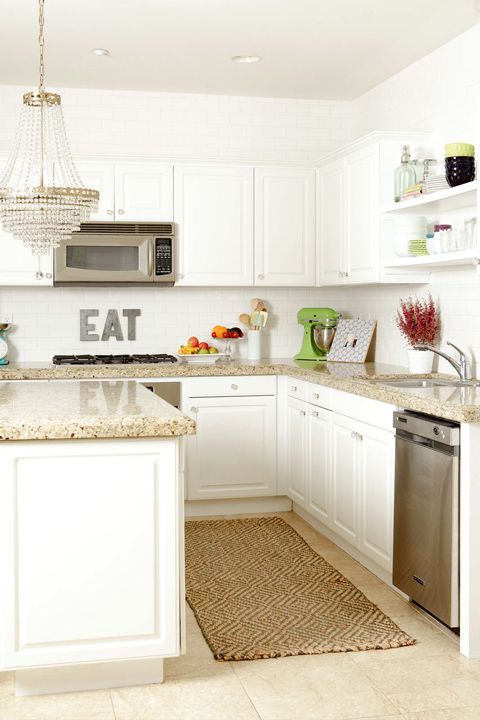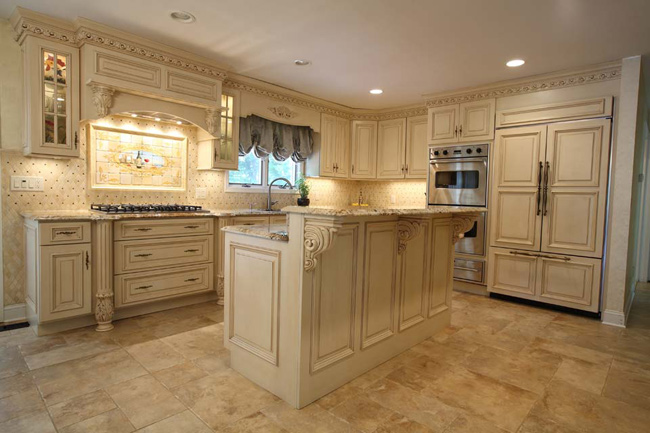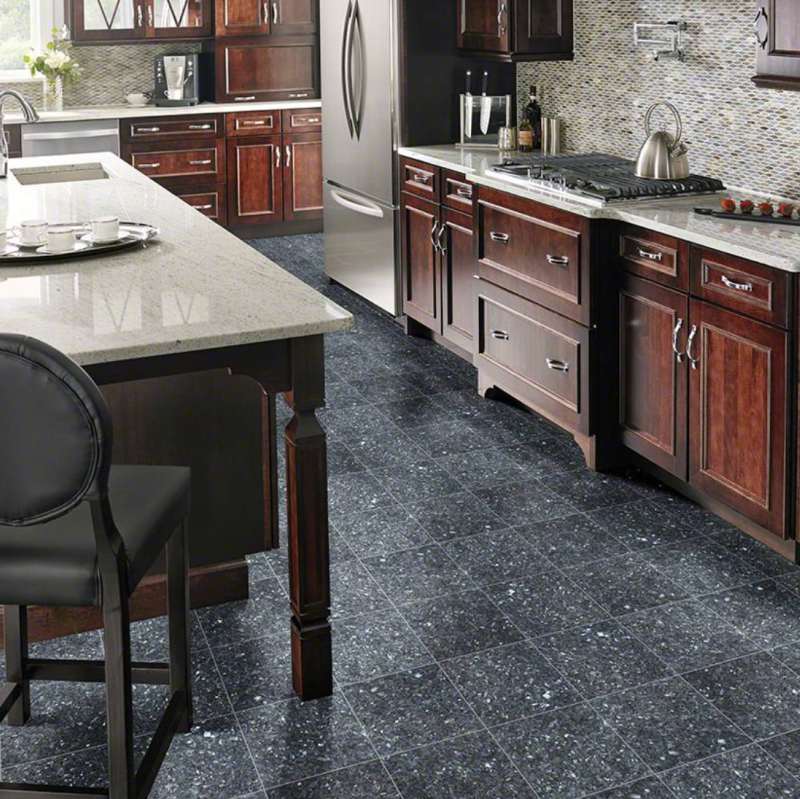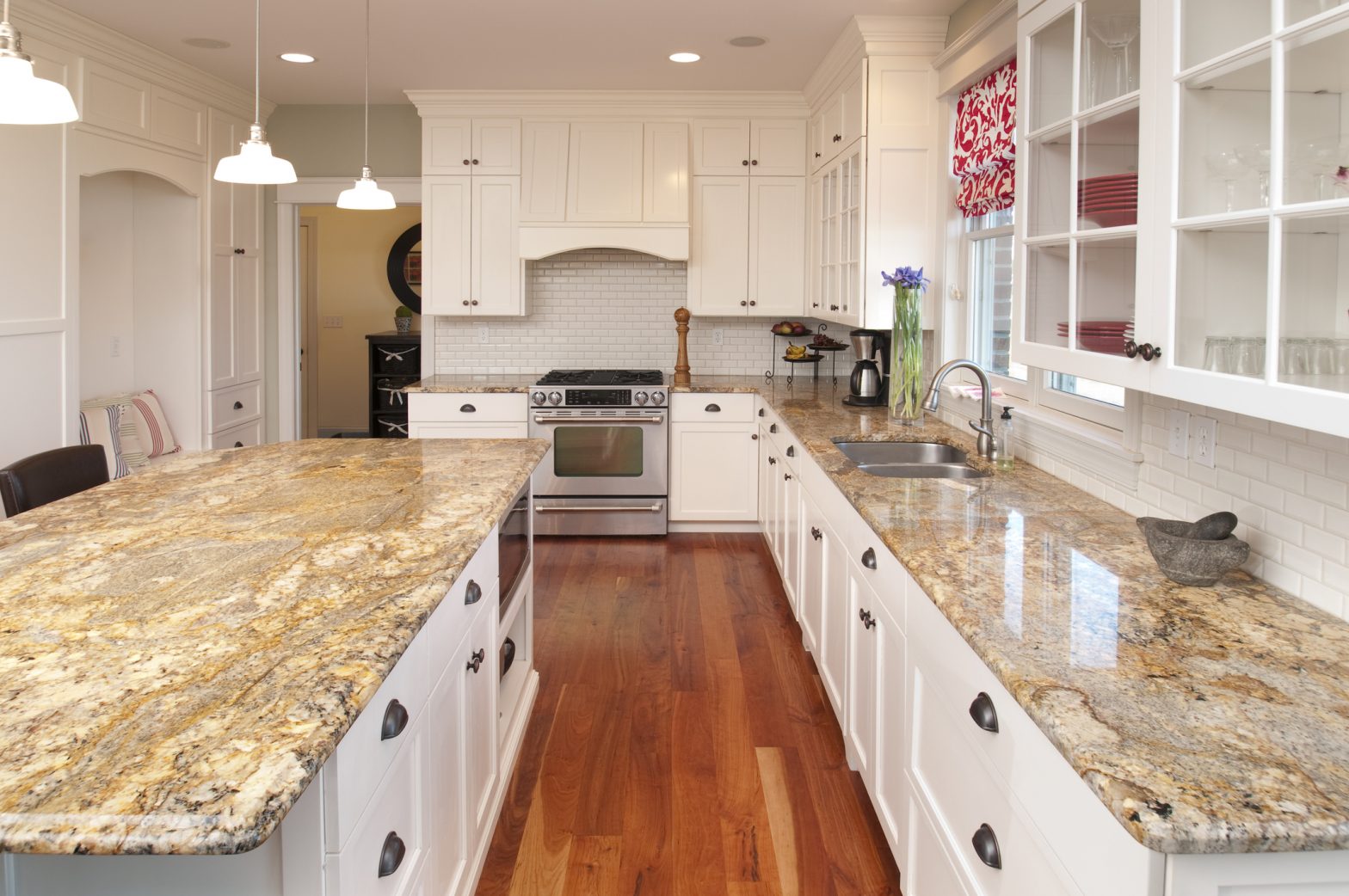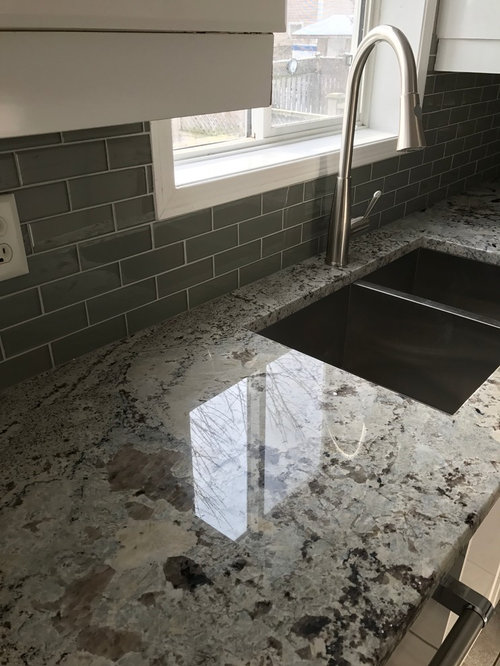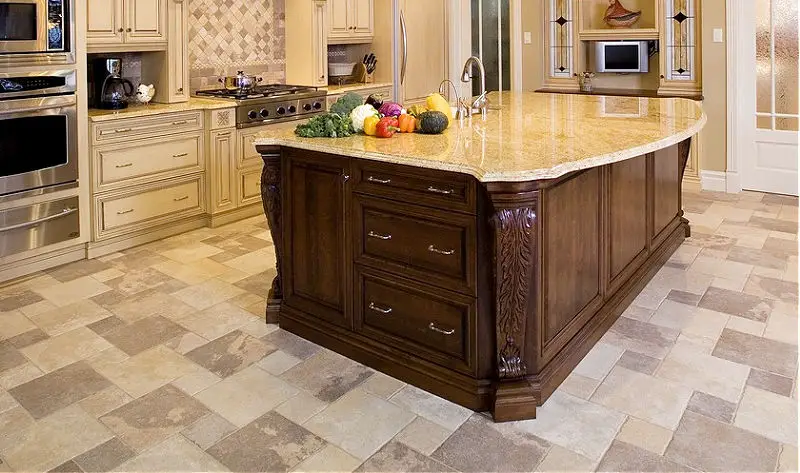The Benefits of Granite Countertops and Tile Floors
Let’s start this article by discussing what benefits do granite countertops and tile floors offer for your kitchen.
- Durability: Both granite countertops and tile floors are known for their exceptional durability. Granite is a natural stone that is incredibly hard and resistant to scratches, heat, and stains. It can withstand heavy use and is not easily damaged. Similarly, tile floors, especially those made of ceramic or porcelain, are highly durable and can withstand high foot traffic without showing signs of wear and tear. They are also resistant to moisture and can be used in areas prone to spills or water exposure.
- Aesthetics: Granite countertops and tile floors are highly desirable for their aesthetic appeal. Granite comes in a wide range of colors and patterns, making it easy to find a style that complements any kitchen or bathroom design. Its natural beauty adds an elegant and luxurious touch to any space. On the other hand, tile floors offer endless design possibilities with a variety of colors, sizes, and textures available. They can be used to create unique patterns and designs, allowing homeowners to personalize their space and create a visually stunning environment.
- Easy Maintenance: Both granite countertops and tile floors are relatively easy to maintain. Granite countertops are sealed to prevent stains and require minimal effort to keep them looking clean and polished. Regular cleaning with a mild soap and water solution is usually sufficient. Tile floors can be easily cleaned with a mop or a damp cloth. Grout lines may require occasional scrubbing to remove dirt and stains, but overall, tile floors are low maintenance and can be kept looking new with regular cleaning.
- Hygiene: Granite countertops and tile floors are both hygienic options for kitchens and bathrooms. Granite is a non-porous material, which means it does not harbor bacteria or germs. Proper cleaning and disinfecting can easily eliminate any potential pathogens. Tile floors, especially those with a sealed or glazed surface, are also resistant to bacteria and mold growth. They provide a clean and safe surface that is ideal for areas where hygiene is a top priority.
- Longevity: Both granite countertops and tile floors are long-lasting investments. With proper care, they can maintain their beauty and functionality for many years. Granite countertops can last a lifetime, while tile floors can last for decades. This longevity makes them a cost-effective choice in the long run, as they do not need to be replaced frequently.
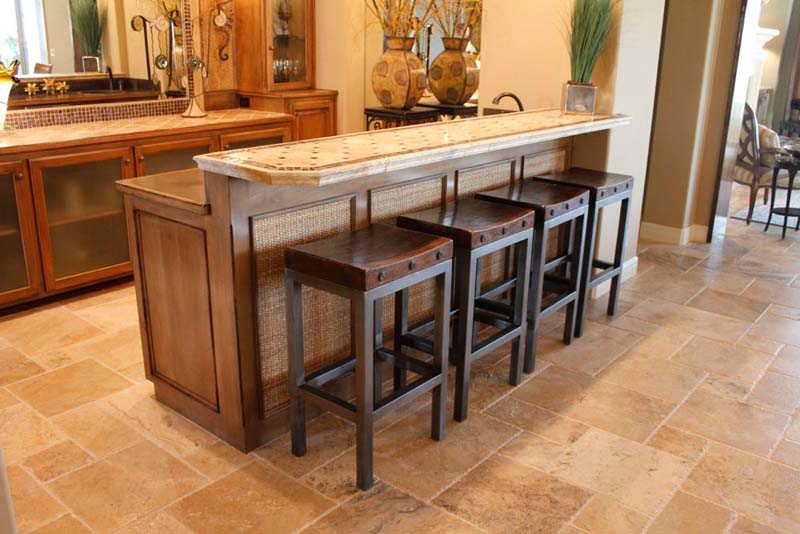
Choosing the Right Granite for Your Countertops
When it comes to choosing the right granite for your countertops, there are several factors to consider. One of the most important considerations is the overall aesthetic you are trying to achieve. Granite comes in a wide variety of colors and patterns, so it is important to choose one that complements the rest of your kitchen or bathroom.
Another important factor to consider is the durability of the granite. Granite is a naturally strong and resilient material, but some types may be more prone to cracking or chipping than others. It is important to choose a granite that is suitable for the level of use and abuse it will receive in your kitchen or bathroom.
Additionally, it is important to consider the maintenance requirements of the granite. Some types of granite may be more porous than others, meaning they are more susceptible to staining or damage from spills. It is important to choose a granite that is easy to clean and maintain.
Finally, it is important to consider the cost of the granite. Granite countertops can vary widely in price depending on the type and quality of the stone. It is important to set a budget and choose a granite that fits within that budget.
How to Care for and Maintain Granite Countertops and Tile Floors
Granite countertops and tile floors are popular choices for homeowners due to their durability and aesthetic appeal. However, proper care and maintenance are essential to ensure their longevity and keep them looking their best. In this section, we will discuss some important tips and techniques for caring for and maintaining granite countertops and tile floors.
Caring for Granite Countertops
- Regular Cleaning: Clean granite countertops daily with a soft cloth or sponge and a mild, pH-neutral cleaner. Avoid using abrasive or acidic cleaners, as they can damage the surface and cause etching.
- Immediate Spill Cleanup: Wipe up any spills on granite countertops immediately to prevent staining. Even though granite is relatively stain-resistant, certain substances like red wine or acidic liquids can penetrate the surface if left unattended.
- Avoid Rough or Sharp Objects: Avoid placing rough or sharp objects directly on the granite surface, as they can scratch or chip the stone. Always use cutting boards and trivets to protect the countertop.
- Use Coasters and Trivets: Place coasters under glasses and trivets under hot pans or dishes to protect the granite from heat damage. Extreme temperature changes can cause the granite to crack or chip.
- Sealant Application: Apply a high-quality granite sealer every 1-2 years to help protect the stone against stains and etching. Follow the manufacturer’s instructions for proper application and reapplication.
Maintaining Tile Floors
- Regular Sweeping or Vacuuming: Sweep or vacuum tile floors regularly to remove dirt, dust, and debris. This prevents them from scratching the surface or getting ground into the grout lines.
- Mopping with Warm Water: Use warm water and a mild, pH-neutral tile cleaner to mop tile floors. Avoid using harsh chemicals or abrasive cleaners, as they can damage the tile or grout.
- Grout Cleaning: Clean the grout lines periodically using a grout cleaner and a small brush. Scrub gently to remove any dirt or stains. For stubborn stains, you can make a paste using baking soda and water, apply it to the grout, and let it sit before scrubbing.
- Avoid Standing Water: Promptly wipe up any standing water on tile floors, as it can seep into the grout and cause it to weaken or crack over time.
Design Ideas for Pairing Granite Countertops with Tile Floors
When it comes to designing your kitchen or bathroom, choosing the right combination of materials is essential in creating a cohesive and visually appealing space. One popular pairing that never goes out of style is granite countertops with tile floors. The natural beauty and durability of granite countertops can be enhanced by the right tile flooring, creating a stunning focal point in any room.
- Contrast with Complementary Colors: One way to create a visually striking design is to pair granite countertops in a neutral color with tile flooring in a contrasting hue. For example, if you have dark granite countertops, consider choosing light-colored tiles with shades of beige or cream. This contrast will add depth and interest to your space, making it feel both elegant and inviting.
- Harmonize with Similar Tones: If you prefer a more subtle and cohesive look, select tile flooring that matches the undertones of your granite countertops. For instance, if your granite has warm brown or gold undertones, choose tile flooring in a similar color palette. This will create a harmonious flow between the countertops and floors, giving your kitchen or bathroom a seamless and sophisticated appearance.
- Mix Textures for Visual Interest: Another design idea is to combine different textures between the granite countertops and tile floors. For example, if your granite has a polished finish, consider pairing it with matte or textured tile flooring. This contrast in texture will create visual interest and add dimension to your space, making it feel more dynamic and unique.
- Create a Statement with Patterns: If you want to make a bold statement in your kitchen or bathroom, consider using patterned tiles with your granite countertops. Choose a tile pattern that complements the color and style of your granite, such as a mosaic or geometric design. This combination will create a visually striking focal point, adding personality and character to your space.
- Blend with Natural Elements: Granite countertops and tile floors are both natural materials, making them a perfect match for creating a cohesive design inspired by nature. Consider selecting earthy tones and textures for both the countertops and floors, such as slate or travertine tiles. This organic combination will bring a sense of tranquility and warmth to your space, creating a serene and inviting atmosphere.
The Cost and Installation Process of Granite Countertops and Tile Floors
The Cost of Granite Countertops
Granite countertops are known for their durability and aesthetic appeal, but they can also come with a hefty price tag. The cost of granite countertops can vary depending on various factors such as the quality of the stone, the size of the countertop, and the complexity of the installation. On average, homeowners can expect to pay between $2,000 and $4,500 for a granite countertop installation. This cost includes both material and labor expenses.
The Installation Process of Granite Countertops
Installing granite countertops requires careful planning and skilled professionals. The installation process typically involves several steps. First, the old countertops will need to be removed, and the area will be prepared for the new installation. Next, the granite slabs will be cut and shaped to fit the specific measurements of the countertop area. Once the slabs are ready, they will be carefully positioned and secured to the cabinets or base. Finally, the seams will be filled and polished to create a seamless and smooth surface.
The Cost of Tile Floors
When it comes to tile floors, the cost can vary significantly depending on the type of tile chosen. Ceramic and porcelain tiles are commonly used for flooring and can range in price from $1 to $20 per square foot. Natural stone tiles, such as granite or marble, tend to be more expensive, with prices ranging from $5 to $30 per square foot. Additionally, the cost of installation should be taken into account, which can range from $4 to $8 per square foot.
The Installation Process of Tile Floors
Installing tile floors is a multi-step process that requires precision and expertise. First, the existing flooring, if any, will need to be removed and the subfloor prepared. Next, a layer of cement or thin-set mortar will be applied to create a smooth and even surface. The tiles are then carefully placed on top of the mortar, ensuring proper alignment and spacing. Once the tiles are in place, grout is applied to fill the gaps between tiles and seal the floor. Finally, the floor is cleaned and sealed to protect it from stains and damage.
Both granite countertops and tile floors can add beauty and value to a home, but they also come with costs and installation considerations. It is important for homeowners to carefully assess their budget and requirements before making a decision. By understanding the cost and installation process, homeowners can make informed choices and ensure successful outcomes for their remodeling projects.
Which floor tile matches best with this granite countertop?!
Floor Tile Comparison: Marble, Granite, Ceramic, Porcelain, Slate tile
Tile Floor Install Blue Springs, Granite Countertop, Hardwood
Granite Countertops Natural Stone – Beautiful u0026 Durable – Davis
Related Posts:
